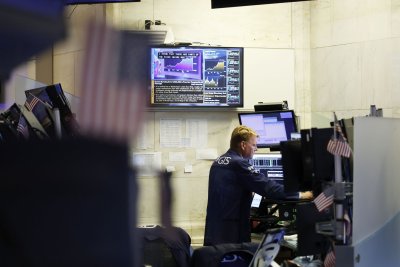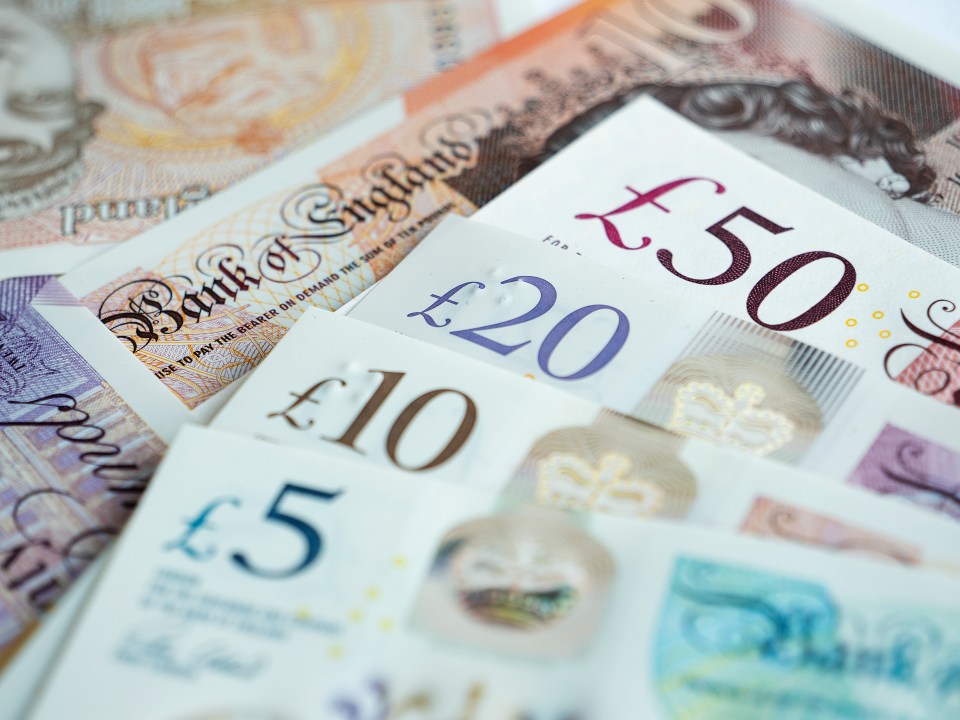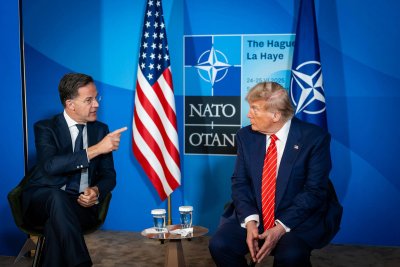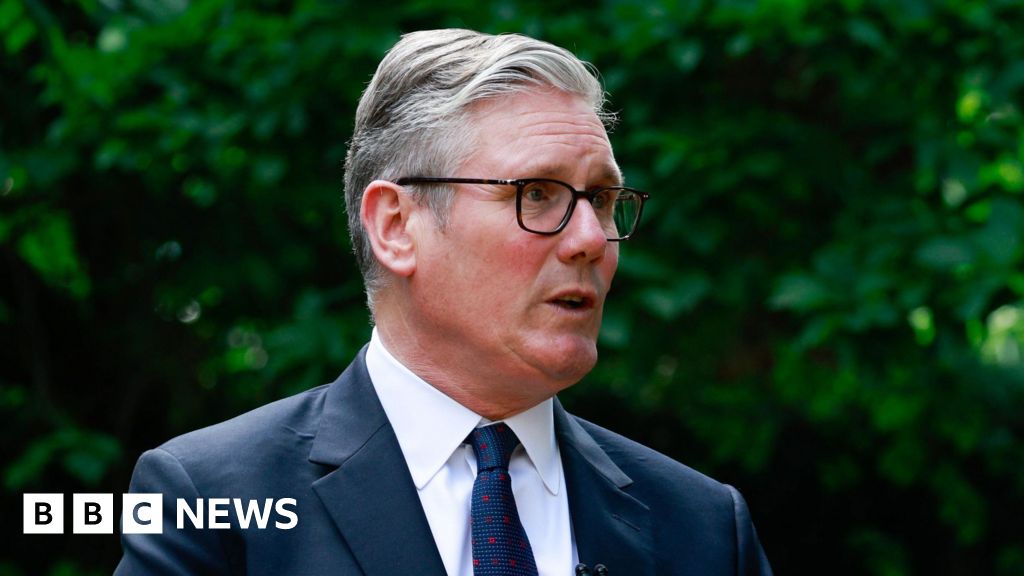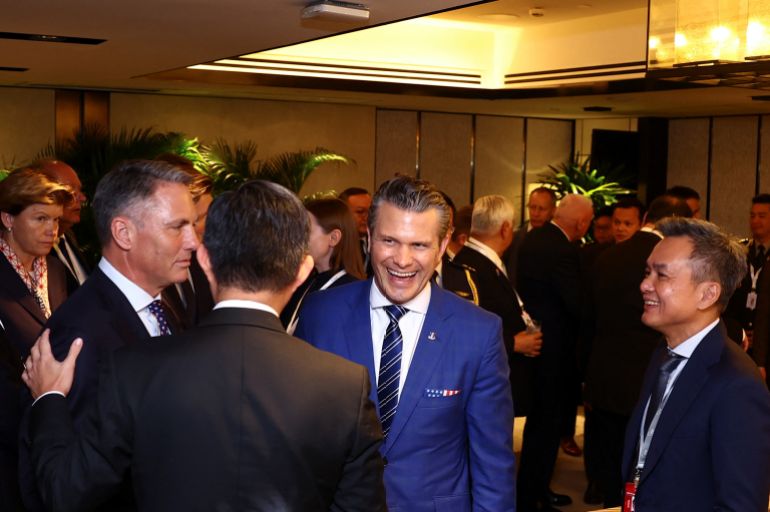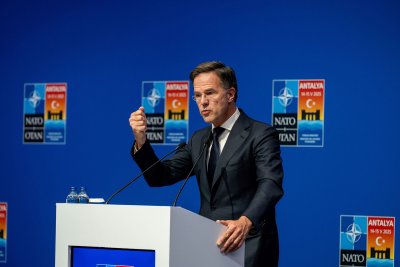U.S. Gross Domestic Product (GDP) Growth by President
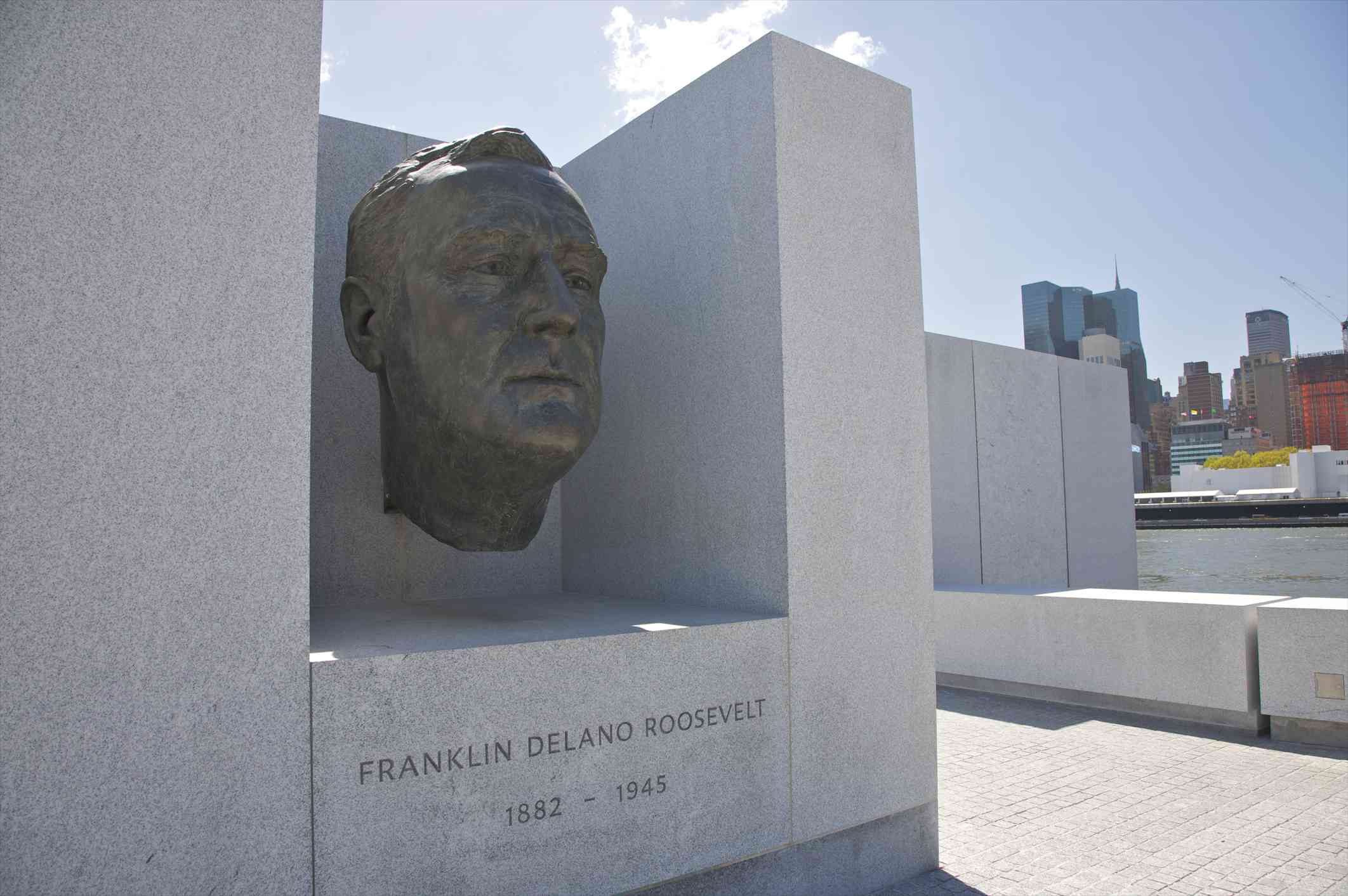
| GDP Growth by U.S. President | ||
|---|---|---|
| President | Years | Average Annual GDP Growth |
| Herbert Hoover (R) | 1929–1933 | -9.3% |
| Franklin D. Roosevelt (D) | 1933–1945 | 10.1% |
| Harry S. Truman (D) | 1945–1953 | 1.4% |
| Dwight D. Eisenhower (D) | 1953–1961 | 2.8% |
| John F. Kennedy (D) | 1961–1963 | 5.2% |
| Lyndon B. Johnson (D) | 1963–1969 | 5.2% |
| Richard Nixon (R) | 1969–1974 | 2.7% |
| Gerald R. Ford (R) | 1974–1977 | 5.4% |
| Jimmy Carter (D) | 1977–1981 | 2.8% |
| Ronald Reagan (R) | 1981–1989 | 3.6% |
| George H.W. Bush (R) | 1989–1993 | 1.8% |
| Bill Clinton (D) | 1993–2001 | 4% |
| George W. Bush (R) | 2001–2009 | 2.4% |
| Barack Obama (D) | 2009–2017 | 2.3% |
| Donald Trump (R) | 2017–2021 | 2.3% |
| Joe Biden (D) | 2021–2025 | 3.2% |
Herbert Hoover (1929–1933)
Average Annual GDP Growth Rate: -9.3%
President Herbert Hoover had the worst average annual GDP growth rate so far at -9.3%. That’s because in October 1929, during Hoover’s first year of his term, the stock market crashed and led to the Great Depression, the most severe and longest economic recession in modern world history.
Hoover took a laissez-faire (low government intervention) approach in response to the Great Depression and vetoed several bills that would have provided relief to Americans impacted by the recession. He also signed the Smoot-Hawley Tariff Act into law, which raised the costs of important goods and affected trade. The GDP growth rate fell to -12.9% in 1932, while unemployment soared to 25% in 1933.
Franklin D. Roosevelt (1933–1945)
Average Annual GDP Growth Rate: 10.1%
President Franklin D. Roosevelt had an average annual GDP growth rate of 10.1% during his four-term presidency, the highest growth rate of any president so far. FDR introduced a series of government programs known as the New Deal to help stimulate the economy during the Great Depression. The New Deal aimed to maintain infrastructure, create jobs, and boost businesses across the country. The New Deal also included programs such as Social Security.
While the New Deal did help the economy recover and helped reduce income inequality in the United States, some economists question its true impact on the economy and even say it may have prolonged the recession by several years. Critiques of the New Deal say that too much government aid may have hindered the economy’s natural way of rebounding after a deep recession. Still, economists consider 1941 as the end of the Great Depression because GDP increased and unemployment dropped. This was also the year when the U.S. entered WWII.
FDR’s social programs also came with major tax increases and national debt. Roosevelt contributed the largest percentage increase to the U.S. national debt between his New Deal initiatives and, more significantly, spending on World War II.
Harry S. Truman (1945–1953)
Average Annual GDP Growth Rate: 1.4%
President Harry Truman had an average annual GDP growth rate of 1.4%. The economy went through two mild recessions during Truman’s term: one in 1945 due to a drop in government spending after the end of WWII and another from 1948 to 1949 as the economy corrected in the wake of a postwar spending boom.
Truman had the difficult job of transitioning the economy from wartime to peacetime without sending it into a recession, and, in large part, did manage to maintain a healthy peacetime economy. Truman also wanted to extend some of the New Deal’s economic programs, such as a higher minimum wage and housing. Still, only a few of his proposals became law due to facing opposition in CongressTruman’s’s Marshall Plan sent $12 billion to help rebuild Western Europe after WWII, boosting the U.S. economy by creating a demand for American goods. The Korean War began durinTruman’s’s term in 1950, leading to $30 billion in government spending that helped boost economic growth under Truman.
Dwight Eisenhower (1953–1961)
Average Annual GDP Growth Rate: 2.8%
President Dwight D. Eisenhower had an annual GDP growth rate of 2.8%. During his time in office, the economy experienced three recessions, and the Korean War ended in 1953. Eisenhower helped boost economic growth with the Federal-Aid Highway Act of 1956, which aimed to rebuild the country’s interstate highways. The government spent a total of $119 billion on the project.
The economy contracted into a recession again from 1957 to 1958 when the Federal Reserve raised interest rates. However, Eisenhower refused to use fiscal policy to stimulate the economy, instead opting to maintain a balanced budget.
John F. Kennedy (1961–1963)
Average Annual GDP Growth Rate: 5.2%
President John F. Kennedy had an average annual GDP growth rate of 5.2%. Kennedy and his administration helped end the 1960 recession (the fourth major recession since WWII) by increasing domestic and military spending. Kennedy also raised the minimum wage and increased Social Security benefits.
Lyndon B. Johnson (1963–1969)
Average Annual GDP Growth Rate: 5.2%
President Lyndon B. Johnson had an average annual GDP growth rate of 5.2%. LBJ was sworn in two hours after Kennedy’s assassination and was re-elected in 1964 after getting 61% of the vote.
Johnson increased government spending and pushed through tax cuts and the civil rights bill proposed during Kennedy’s term. Johnson’s Great Society program in 1965 created social programs such as Medicare, Medicaid, and public housing. While the economy grew under LBJ with strong businesses and low unemployment, prices began to rise rapidly, and inflation ticked up. However, Johnson did not raise taxes to curb spending and cool inflation. Johnson also escalated the Vietnam War, which began during his term, but he was unable to end it.
Richard Nixon (1969–1974)
Average Annual GDP Growth Rate: 2.7%
President Richard Nixon had an average annual GDP growth rate of 2.7%. Though Nixon attempted to cool the inflation that began during LBJ’s term without causing a recession, his economic policies caused a period of stagflation that lasted for a decade. This period was a result of double-digit inflation and economic contraction.
Nixon imposed tariffs and wage-price controls, which led to layoffs and slower growth. The value of the dollar also fell during Nixon’s term when he ended the gold standard. The aftermath of Nixon’s economic policies is called the Nixon Shock.
Gerald R. Ford (1974–1977)
Average Annual GDP Growth Rate: 5.4%
President Gerald R. Ford had an average annual GDP growth rate of 5.4%. The economy had contracted and was in a recession from 1974 to 1975 due to stagflation from Nixon’s time. Ford and his administration cut taxes and reduced regulation to stabilize the economy, and ended the recession. However, inflation remained high.
Jimmy Carter (1977–1981)
Average Annual GDP Growth Rate: 2.8%
President Jimmy Carter had an average annual GDP growth rate of 2.8%. Stagflation continued into Carter’s term, and was made worse by an energy crisis that led to soaring gas prices and shortages. Carter deregulated oil prices to stimulate domestic production and also deregulated the airline and trucking industries. The Iranian hostage crisis in 1979, however, led to economic contraction. Carter also had the highest inflation rate among U.S. presidents to date.
Ronald Reagan (1981–1989)
Average Annual GDP Growth Rate: 3.6%
President Ronald Reagan had an average annual GDP growth rate of 3.6%. The economy went into a recession in 1981 after the Fed raised interest rates to 20% in an effort to cool inflation.
Reagan’s economic policies, later known as Reaganomics, aimed to end the recession through decreased government spending, tax cuts, increased military spending, and reduced social spending. While these policies helped bring inflation down, Reagan added over $1.86 trillion to the national debt and made the budget deficit worse. Critics of Reagan’s economic policies also say he widened the nation’s wealth gap, and that his deregulation of the financial services industry may have contributed to the Savings and Loan Crisis in 1989.
George H.W. Bush (1989–1993)
Average Annual GDP Growth Rate: 1.8%
President George H.W. Bush had an average annual GDP growth rate of 1.8%. Bush’s administration had to contend with the fallout of the Savings and Loan Crisis, which unfolded during the 1980s and 1990s and contributed to a recession in 1990–1991. In 1989, Bush agreed to a $100 billion government bailout plan to help banks out of the Savings and Loan Crisis. Bush also raised taxes and cut government spending in an effort to reduce the budget deficit.
Bill Clinton (1993–2001)
Average Annual GDP Growth Rate: 4.0%
President Bill Clinton had an average annual GDP growth rate of 4%. The economy grew for 116 consecutive months, with 22.5 million jobs created in Clinton’s two terms. Clinton signed the North American Free Trade Agreement (NAFTA) which increased growth by getting rid of tariffs between the U.S., Canada, and Mexico. Clinton also lowered the national debt, creating a budget surplus of $70 billion. Clinton raised taxes on the wealthy and briefly cut government spending to reform welfare.
George W. Bush (2001–2009)
Average Annual GDP Growth Rate: 2.4%
President George W. Bush had an average annual GDP growth rate of 2.4%. Bush’s two terms came with major events such as the 9/11 attacks (2001), Hurricane Katrina (2005), and the 2008 recession. Bush launched the War on Terror by creating and expanding the U.S. Department of Homeland Security (DHS) in response to the 9/11 attacks. Bush also faced the Great Recession in 2008, which was considered the most severe recession since the Great Depression. Bush’s military spending and significant tax cuts in response to the recession added about $4 trillion to the national debt.
Barack Obama (2009–2017)
Average Annual GDP Growth Rate: 2.3%
President Barack Obama had an average annual GDP growth rate of 2.3%. Obama ended the 2008 recession he inherited with the American Recovery and Reinvestment Act (ARRA), an $831 billion stimulus package passed by Congress aimed at cutting taxes, extending unemployment benefits, and improving infrastructure and education. However, Obama is the president who added the most to the national debt, in dollar amounts, with his recession relief measures.
Still, Obama bailed out the auto industry in the U.S. and created 11.3 million new jobs during his two terms. Inflation and interest rates also remained low. He also ended the Iraq War and reduced troops in Afghanistan. Obama’s economic policies, now known as Obamanomics, were controversial at the time, and his role in ending the 2008 recession is still debated.
Important
Note that the following section only highlight’s Trump’s first term in office.
Donald Trump (2017–2020)
Average Annual GDP Growth Rate: 2.3%
President Donald Trump had an average annual GDP growth rate of 2.3%. While there were no major wars or recessions during Trump’s presidency, he did face the COVID-19 pandemic in 2020, his last year in office. Trump increased spending and cut taxes, while the Fed raised interest rates in response to Trump’s expansionary fiscal policies.
Trump placed import taxes on products from China, particularly steel and aluminum, to boost sales of American-made products. However, it hurt the sales of American exports instead, as China responded by placing tariffs on products it imported from the U.S. It also increased costs for American consumers.
The economy went into recession with the onset of the COVID-19 public health crisis in March 2020 as businesses closed down and Americans sheltered in place. The recession was short but severe, and the Trump administration responded by declaring a state of emergency and passing a $2 trillion stimulus package called the CARES (Coronavirus Aid, Relief, and Economic Security) Act. The CARES Act provided relief for businesses and individuals through stimulus payments and a pause on student loan payments, among other measures, but it was not enough to pull the economy out of the pandemic-induced recession.
Joe Biden (2021–2025)
Average Annual GDP Growth Rate: 3.2%
President Joe Biden had an annual average GDP growth of 3.2%, with a cumulative real GDP increase of 12.6% over his term, highlighted by a 5.7% growth in 2021. Biden took office in the middle of the COVID-19 pandemic and signed the American Rescue Plan Act in 2021, which was a $1.9 trillion stimulus package to provide economic relief from the pandemic.
While the recession caused by the pandemic was severe, it was short-lived. However, it was followed by record-high inflation, partly due to the Russian invasion of Ukraine, which caused soaring gas prices in 2022, supply chain snarls, higher demand for goods, and increased consumer spending from federal stimulus checks. The Federal Reserve responded by raising interest rates 11 times in an attempt to cool inflation. In July 2024, inflation cooled to 2.9%, and the Fed signaled a rate cut.
How Does the President Impact GDP?
Since GDP is the most popular way to measure economic growth, it can show us how the economy performed under each U.S. president. The economy’s performance under a president is an important factor that voters consider when evaluating a president’s time in office. Additionally, economic policies are one of the primary issues that presidents address during their campaigns.
Presidents indeed play a role in determining GDP. The president and Congress set fiscal policy to help direct the economy. The executive and legislative branches, for instance, can lower taxes and increase government spending to boost the economy, or do the opposite.
While the president plays an important role in guiding the economy, external factors that can slow down the economy—such as wars, recessions, or public health crises—also significantly impact the economy and can be out of the president’s control. In addition, the Federal Reserve—which is independent of the federal government—sets monetary policy, which influence the economy as well.
Has the US Economy Done Better Under Democrats or Republicans?
Between 1929 and 2024, there have been nine Democratic and seven Republican presidents. Eight Democrats (88%) and five Republicans (71%) maintained a GDP growth rate over 2%. If measured by GDP alone, democrats have done better than republicans with the economy.
Which President Has the Best GDP?
President Franklin D. Roosevelt had the highest average annual GDP growth rate so far, at 10.1%. However, FDR also contributed the largest percentage increase to the U.S. national debt between his New Deal initiatives and spending on World War II.
Who Owns Most of the US GDP?
According to the Bureau of Economic Analysis, the real estate, rental, and leasing industry contributed to 38% of the United States’ GDP in 2024.
The Bottom Line
Looking at GDP growth is one of the most widely used measures of economic growth, as it is considered one of the most accurate economic indicators. Since a president’s economic policies can have a significant impact on GDP, it can be used as a way to examine how the economy did under each U.S. president.
However, it is essential to remember that certain economic events, such as severe recessions, natural disasters, public health crises, and other catastrophic events, can significantly impact the economy and have little to do with who is in office. Still, the way a president, along with the central bank, sets and enacts monetary policy in response to such events also influences the economy.
